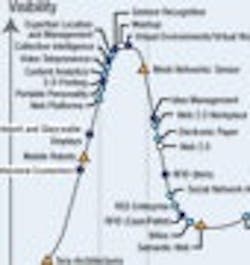The Wireless Hype in Process Automation
In the early 1990s, fuzzy logic was the next big thing in automation technology. Hardly anybody will remember today that all relevant fairs around the world were dominated by the hype surrounding the saving grace of “fuzzy functions.” All of the control problems of the world were to be easily solved, along with world hunger, AIDS and environmental pollution. Those who did not have at least one “fuzzy” sign at their booth were considered notoriously outdated. Those who suggested “keeping one’s hair on” at panel discussions just didn’t understand the spirit of the time. Even though the word “hype” appeared only later, it would have well-suited the fuzzy logic euphoria of those days. The Concise Oxford Dictionary, 9th edition, defines hype as "extravagant or intensive publicity promotion" or, less subtly, "cheating, a trick." By no means does this question the high scientific and, in some cases, the practical value of the fuzzy set theory.
In recent years, publicity surrounding “wireless for automation technology” fatally recalls this fuzzy logic hype. Most recently, at ISA Expo and at Interkama at Hannover Fair, amazed users were told—and not for the first time—that wireless transmission technology for data and information in process engineering had almost solved all of the global automation problems, and that truly golden ages were now dawning for everyone in process automation. One merely had to agree on some standards, preferably American, for the rest of the world, but then one could really get going...
Everybody is familiar with such pronouncements, often disseminated by compliant journalists and consultants scenting big business. The marketing machinery of big providers revs up to peak performance. Interest blocks form and disintegrate again. The “who is not for me is against me” attitude circulates. Every provider jumps at least on one bandwagon, many on several, wanting to “careful not to miss a thing!” The customer, whose benefit every provider is concerned about, stands afar in amazement looking on or turning away. Much ado about nothing?
An associate of the Gartner Group described a hype cycle in form of a diagram in 1995. The Y axis represented awareness of a new technology, and the X axis was time elapsed since it became known, both subdivided into five sections: 1) technology trigger, 2) peak of inflated expectations, 3) trough of disillusionment, 4) slope of enlightenment, and 5) plateau of productivity.
Figure 1 shows the “Hype Cycle for Emerging Technologies.” Look at the borderline between the “Peak of Inflated Expectations” and the “Trough of Disillusionment. See the yellow triangle at “Mesh Networks: Sensors.” That yellow triangle is a caution warning, meaning it will be more than 10 years until the Plateau of Productivity will be reached. This corresponds quite well with my personal estimation.
Figure 1. Hype cycle for emerging technologies, 2007.
Gartner may be wrong. I may be wrong. It’s undisputed among experts today that wireless communication techniques, together with further advances in microelectronics and microsystem engineering, have huge market potential. “Many process industry applications already use wireless communication techniques, and more will appear,” said Norbert Kuschnerus, president of NAMUR, at its general meeting in November 2007. However, he also referred to the limitations of these techniques in process plants. Much of the clamor surrounding wireless today that raises unrealizable expectations strongly brings to mind the second definition of “hype” in the Concise Oxford Dictionary.
Why then this public ado? It’s not ado about “nothing.” It’s about marketing. Who dwells in the aura of the technology leader? Who dictates the standards? Who appoints the panels? Who profits from certifications and test laboratories?
It seems to me that the standardization war which rages ferociously on the backs of users is a hyperventilation of the old wisdom: “If you don’t standardize, you are standardized.” However, this word of wisdom should arouse the suspicions of entrepreneurs and managers, be they users or providers of automation technology, even high technology. For it also shows that markets can be created by standardization in our globalized world, and that standardizing has become more important than patenting for companies, as well as for regions and states.
Where does this lead? As I already advised the fuzzy-fuzzies in 1992:
- Keep your hair on;
- Focus efforts on solving the vast number of application problems using the most suitable technology;
- Fully involve customers in the standards-building process;
- Watch “High Noon” at the cinema and don’t imitate it at the standardization committee;
- Conceive of technology as a troubleshooter, not as a marketing instrument.
And, promise only what you surely can keep. Then, I think, wireless in process automation will have a fair chance of not sharing the fate of fuzzy logic, but will pass through the “trough of disillusionment” swiftly, arriving at the “plateau of productivity” in less than 10 years.
Dipl.-Ing. Dieter Schaudel is former CTO and CIO on the Executive Committee of the Endress+Hauser Group Now he is a freelance innovation consultant in Freiburg im Breisgau, Germany. He can be reached at www.SCHAUDELconsult.de.



